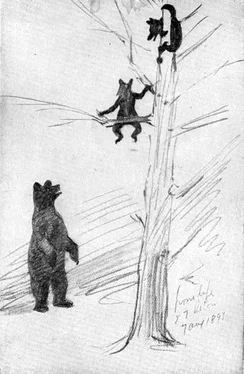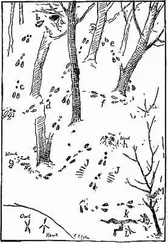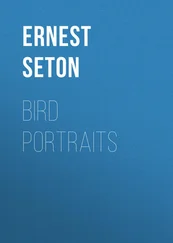Ernest Seton - Wild Animals at Home
Здесь есть возможность читать онлайн «Ernest Seton - Wild Animals at Home» весь текст электронной книги совершенно бесплатно (целиком полную версию без сокращений). В некоторых случаях можно слушать аудио, скачать через торрент в формате fb2 и присутствует краткое содержание. Год выпуска: 2009, Жанр: Природа и животные, на английском языке. Описание произведения, (предисловие) а так же отзывы посетителей доступны на портале библиотеки ЛибКат.
- Название:Wild Animals at Home
- Автор:
- Жанр:
- Год:2009
- ISBN:нет данных
- Рейтинг книги:5 / 5. Голосов: 1
-
Избранное:Добавить в избранное
- Отзывы:
-
Ваша оценка:
- 100
- 1
- 2
- 3
- 4
- 5
Wild Animals at Home: краткое содержание, описание и аннотация
Предлагаем к чтению аннотацию, описание, краткое содержание или предисловие (зависит от того, что написал сам автор книги «Wild Animals at Home»). Если вы не нашли необходимую информацию о книге — напишите в комментариях, мы постараемся отыскать её.
Wild Animals at Home — читать онлайн бесплатно полную книгу (весь текст) целиком
Ниже представлен текст книги, разбитый по страницам. Система сохранения места последней прочитанной страницы, позволяет с удобством читать онлайн бесплатно книгу «Wild Animals at Home», без необходимости каждый раз заново искать на чём Вы остановились. Поставьте закладку, и сможете в любой момент перейти на страницу, на которой закончили чтение.
Интервал:
Закладка:
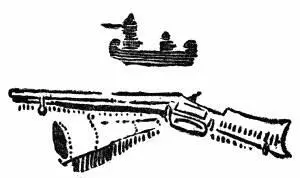
THE BIGGEST OF OUR GAME—THE BUFFALO
"Yes, that's a buffalo-bird," said the old Indian, pointing to some black birds, with gray mates, that flitted or ran across the plain. "Pretty bad luck when the Buffalo gone. Them little birds make their nest in a Buffalo's wool, right on his head, and when the Buffalo all gone, seem like the buffalo-bird die too; 'cause what's the use, no got any nest."
This is a fragment that reached me long ago in Montana. It seemed like a lusty myth, whose succulent and searching roots were in a bottomless bog, with little chance of sound foundation. But the tale bore the searchlight better than I thought. For it seems that the buffalo-bird followed the Buffalo everywhere, and was fond of nesting, not in the shaggy mane between the horns of the ruling monarch, but on any huge head it might find after the bull had fallen, and the skull, with mane attached, lay discarded on the plain. While always, even when nesting on the ground, the wool of the Buffalo was probably used as lining of the black-bird's nest. I know of one case where an attendant bird that was too crippled to fly when autumn came, wintered in the mane of a large Buffalo bull. It gathered seed by day, when the bull pawed up the snow, and roosted at night between the mighty horns, snuggling in the wool, with its toes held warm against the monster's blood-hot neck.
In most of the Northwest the birds have found a poor substitute for the Buffalo in the range-cattle, but oh! how they must miss the wool.

XVIII. Moose—the Widow
Drawing by E. T. Seton
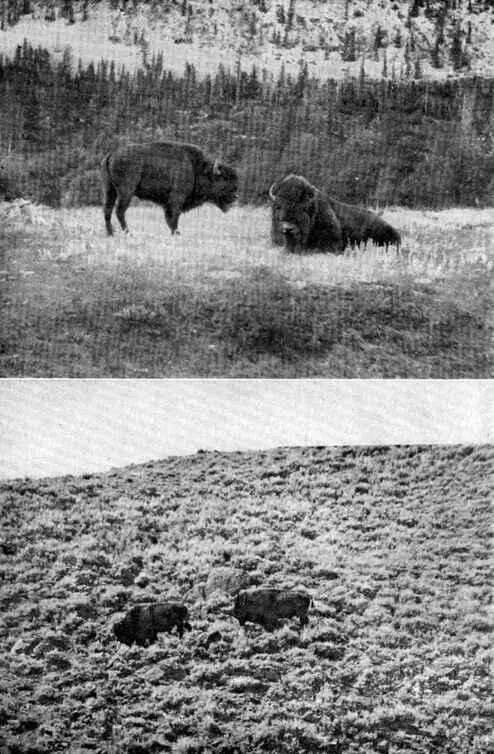
XIX. Buffalo Groups (a) Bull and Cow at Banff; (b) Yellowstone Bulls
Photos by G. G. Seton
THE SHRUNKEN RANGE
It is not generally known that the American Buffalo ranged as far east as Syracuse, Washington City, and Carolina, that they populated the forests in small numbers, as well as the plains in great herds. I estimate them at over 50,000,000 in A.D. 1500. In 1895 they were down to 800; probably this was the low-ebb year. Since then they have increased under judicious protection, and now reach about 3,000.
In the June of 1897, as I stood on a hill near Baronett's Bridge, overlooking the Yellowstone just beyond Yancey's, with an old timer, Dave Roberts, he said: "Twenty years ago, when I first saw this valley, it was black-speckled with Buffalo, and every valley in the Park was the same." Now the only sign of the species was a couple of old skulls crumbling in the grass.
In 1900 the remnant in the Park had fallen to thirty, and their extinction seemed certain. But the matter was taken up energetically by the officers in charge. Protection, formerly a legal fiction, was made an accomplished fact. The Buffalo have increased ever since, and to-day number 200, with the possibility of some stragglers.
We need not dwell on the story of the extinction of the great herds. That is familiar to all,[B] but it is well to remind the reader that it was inevitable. The land was, or would be, needed for human settlement, with which the Buffalo herds were incompatible; only we brought it on forty or fifty years before it was necessary. "Could we not save the Buffalo as range-cattle?" is the question that most ask. The answer is: It has been tried a hundred times and all attempts have been eventually frustrated by the creature's temper. Buffalo, male or female, are always more or less dangerous; they cannot be tamed or trusted. They are always subject to stampede, and once started, nothing, not even sure destruction, stops them; so in spite of their suitability to the climate, their hardihood, their delicious meat, and their valuable robes, the attempts at domesticating the Buffalo have not yet been made a success.
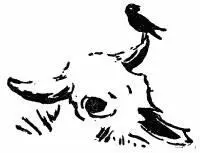
A small herd of a dozen or so is kept in a fenced range near the Mammoth Hot Springs, where the traveller should not fail to try for pictures, and with them he will see the cowbirds, that in some regions replace the true buffalo-birds. Perched on their backs or heads or running around them on the ground are these cattle birds as of yore, like boats around a man-o'-war, or sea-gulls around a whale; living their lives, snapping up the tormenting flies, and getting in return complete protection from every creature big enough to seem a menace in the eyes of the old time King of the Plains.
THE DOOMED ANTELOPE AND HIS HELIOGRAPH
The Antelope, or Pronghorn, is one of the most peculiar animals in the world. It is the only known ruminant that has hollow horns on a bony core as with cattle, and also has them branched and shed each year as in the Deer.
It is a creature of strangely mixed characteristics, for it has the feet of a Giraffe, the glands of a goat, the coat of a Deer, the horns of an ox and Deer combined, the eyes of a Gazelle, the build of an Antelope, and—the speed of the wind. It is the swiftest four-footed creature native to the plains, and so far as known there is nothing but a blooded race horse that can outrun it on a mile.
But the peculiarity that is most likely to catch the eye of the traveller is the white disc on its rear.

The Heliograph
The first day I was in the Yellowstone I was riding along the upland beyond Blacktail Creek with T. E. Hofer. Miles away to the southeast we saw some white specks showing, flashing and disappearing. Then as far to the northeasterly we saw others. Hofer now remarked, "Two bunches of Antelope." Then later there were flashes between and we knew that these two bands had come together. How?
When you have a chance in a zoo or elsewhere to watch Antelope at short range you will see the cause of these flashes. By means of a circular muscle on each buttock they can erect the white hair of the rump patch into a large, flat, snow-white disc which shines in the sun, and shows afar as a bright white spot.

XX. Near Yellowstone Gate: (a) Antelope
Photo by F. Jay Haynes
(b) Captive Wolf
Photo by E. T. Seton
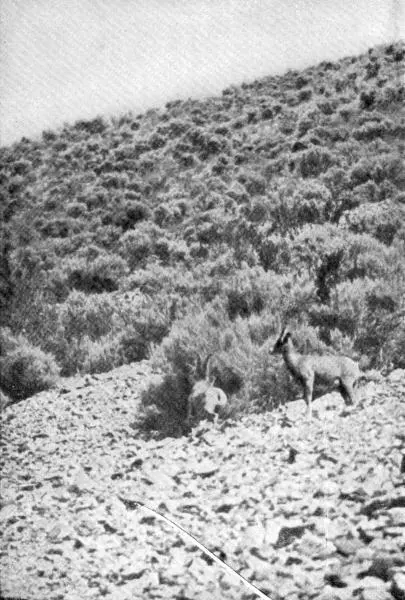
XXI. Mountain Sheep on Mt. Evarts
Photo by E. T. Seton
This action is momentary or very brief; the spread disc goes down again in a few seconds. The flash is usually a signal of danger, although it answers equally well for a recognition mark.
In 1897 the Antelope in the Park were estimated at 1,500. Now they have dwindled to about one third of that, and, in spite of good protection, continue to go down. They do not flourish when confined even in a large area, and we have reason to fear that one of the obscure inexorable laws of nature is working now to shelve the Antelope with the creatures that have passed away. A small band is yet to be seen wintering on the prairie near Gardiner.
Читать дальшеИнтервал:
Закладка:
Похожие книги на «Wild Animals at Home»
Представляем Вашему вниманию похожие книги на «Wild Animals at Home» списком для выбора. Мы отобрали схожую по названию и смыслу литературу в надежде предоставить читателям больше вариантов отыскать новые, интересные, ещё непрочитанные произведения.
Обсуждение, отзывы о книге «Wild Animals at Home» и просто собственные мнения читателей. Оставьте ваши комментарии, напишите, что Вы думаете о произведении, его смысле или главных героях. Укажите что конкретно понравилось, а что нет, и почему Вы так считаете.
